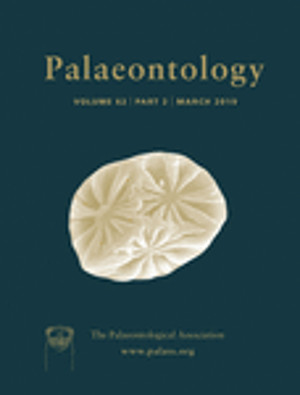Reg. Charity No. 1168330

Multiple, small, cylindrical scroll coprolites having rounded and tapering ends and pertaining to a new ichnotaxon have been recovered from the Upper Triassic Tiki Formation of India. This is the first record of scroll coprolites from the Mesozoic. Based on cross‐sectional geometry, external surface textures, and internal morphology, these coprolites are subdivided into three morphotypes. The coprolites contain several kinds of undigested food material in the form of ganoid fish scales, teeth, lower jaw and skeletal remains of various osteichthyans, chondrichthyans, archosauriforms and indeterminate reptiles. These inclusions are embedded in the groundmass separated by thin mucosal layers. The groundmass contains abundant gas vesicles, and secondarily‐filled shrinkage cracks. EDS analysis shows that the overall composition of the coprolites reflects Ca, P, C and O, suggesting calcium phosphate mineralogy, though other elements such as Fe, Mn, Al, Si are present in lesser proportions. Based on their similarity with the scrolled faeces of extant euryhaline hammerhead sharks, it is deduced that these coprolites were produced by euryhaline hybodontid sharks. At least two hybodontid taxa, Lonchidion and Pristrisodus, show high prevalence in the Tiki vertebrate fauna, suggesting that these were the possible producers. As the coprolite inclusions contain remains of other aquatic animals, these carnivorous hybodonts constituted the dominant predators of the Tiki aquatic ecosystem.